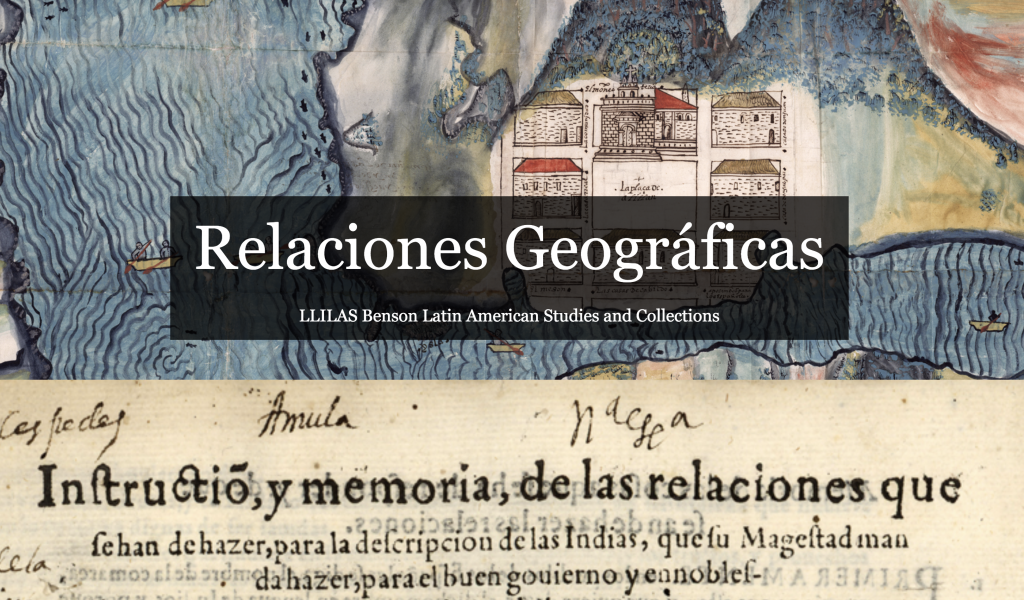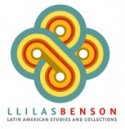
BY SUSANNA SHARPE
Albert A. Palacios possesses an insatiable thirst for knowledge and the energy to match. In the almost fifteen years since he moved to Austin as an undergraduate, he has earned four degrees, finished the coursework for a PhD, studied in an array of disciplines, and contributed his creativity, vision, and leadership to two world-renowned special collections.
A native of El Paso, Palacios arrived at The University of Texas at Austin in 2004 to pursue an undergraduate degree in architecture. He added a BA in anthropology in order to explore his interest in the design of museum spaces and how that influences our perception of cultures, history, and the past in general. Before finishing his undergraduate degree, Palacios began an internship at the Harry Ransom Center, where he worked in conservation and cataloging.
Palacios’s burgeoning interest in conservation led him to pursue the Master of Science in Information Studies at the UT School of Information, or iSchool. There, he focused on museums and the use of digital technology in exhibition spaces while continuing to work at the Ransom Center, now in the area of digitization. He also became interested in curatorial work.
We are only halfway through his career as a student, but this might be a pivotal moment. After earning his first three degrees, Palacios turned to Latin American curatorial work. He had long been interested in the preservation and restoration of Spanish missions in Texas, and had participated in a mission preservation project in Socorro. “The missions were sites of some of the earliest contact between indigenous and colonizer cultures,” says Palacios. In his research, he zeroed in on the Franciscan missionaries, leading him to begin his second master’s degree, this time in Latin American studies at LLILAS, in 2010.
Many themes came together during this period. Palacios spent time poring over rare books at the Benson Latin American Collection, including a collection of some of the first books published in the “new world”—the Primeros Libros de las Américas. Studying Franciscan missionary history allowed him to “explore how designed architectural borders inculcate Christian power relations that touch on gender, religion, and economics.” A set of obscure documents in the Primeros Libros collection would become a focus of his work. But upon completing his master’s in 2012, Palacios knew he was not yet finished studying Latin American history.
Palacios, who is currently ABD (all but dissertation) in the Department of History, brings his considerable experience to his job as LLILAS Benson Digital Scholarship Coordinator. His own love of learning translates into a desire to help people do research in new ways. “Foremost, I support students, faculty, and staff in building their technical capacity in a way that can benefit their research.”
Palacios offers workshops each semester for students, teaching collection of resources, analysis, interpretation, and presentation of research using digital tools. Some of these are taught with colleagues at the University of Texas Libraries or through LLILAS Benson scholarly programs.
One of his most exciting and accessible projects has involved the use of geographic information system (GIS) software to create an interactive website featuring the sixteenth-century documents and maps from the Relaciones Geográficas collection at the Benson. The collection consists of stunning painted maps of Mesoamerican towns, many of which were created by indigenous artists, as well as lengthy and detailed surveys, all required by the Spanish Crown of its subjects in New Spain (roughly, present-day Mexico and Guatemala). The website, LLILAS Benson Relaciones Geográficas, is richly illustrated, with narration explaining the significance of the Relaciones and details about the historical period. The user can also explore the Relaciones one by one by clicking on different locations on a map. Each click leads to an image of the sixteenth-century map and a narrative description of the towns containing census data from a 50-question survey.

As part of his position, Palacios works with partners on other campuses and in other cities, sharing materials, setting up exhibitions, and traveling to conduct workshops. Recent travel has included the South Texas College Library, the University of Texas Rio Grande Valley Brownsville Library, and UT El Paso. Palacios also reaches international audiences with his work. Last November, he gave a keynote presentation on LLILAS Benson’s digital humanities efforts at the annual conservation symposium of the Escuela Nacional de Conservación, Restauración y Museografía “Manuel del Castillo Negrete” in Mexico City.
“I am interested in how scholars can use digital technologies to transform their research into formats that are accessible and digestible for nonspecialists,” says Palacios. “A lot of people think that digital humanities are just bells and whistles for academic research, but if we want our work to have broader impact, we have to think beyond our own disciplines, and academia writ large, and find ways to make our research relevant and available to different audiences with different literacies who can benefit from the work we do.”
Susanna Sharpe is communications coordinator at LLILAS Benson Latin American Studies and Collections, and editor of Portal magazine.


